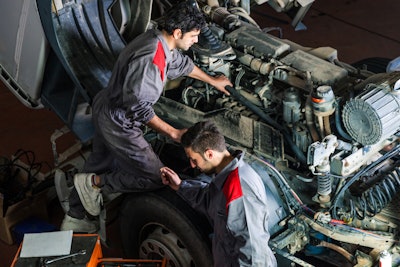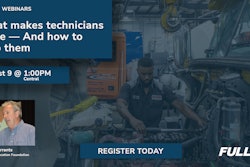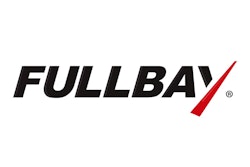
That there’s a shortage of diesel technicians is hardly news.
Neither is the fact pay is a powerful motivator in attracting them to your shop floor.
It’s not just how much you pay, though. It’s also how you pay them.
Technicians everywhere have strong opinions about how they’re paid. Some shops pay a flat rate and some pay hourly. Some use a system somewhere in between. And some even vary it based on the technician themselves.
Jay Goninen, co-founder and president at WrenchWay, says the best way to find out what pay system your techs like is to just ask them.
[RELATED: 'We're eating our young.' Why retaining young techs has become so hard]
“The way I like to start is to have a good, honest, candid conversation with your team,” Goninen says. “So many techs feel like they’re just a number that’s put out in the shop to produce.”
Brian Martin, parts and service director at New England Truck Center in New Hampshire, says his shop is strictly hourly with no bonus system.
In Martin’s opinion, flat-rate pay in truck shops defeats the purpose of retaining technicians because when the pay inevitably drops off, they start looking elsewhere.
“Some days you eat the bear,” Martin says. “Some days the bear eats you.”
Heavy-duty trucks, unlike passenger vehicles, are bigger and heavier and so are the repair jobs.
“You’re not going to whip through them like you would a car,” he says.
Guy Robertson, vice president of Texas Trucks Direct in Stephenville, Texas, says his shop tailors pay schedules based on the technician. Technician ability is the key to which system is best for them, Robertson says.
“If a guy was smart, he’d want to be flat-rate as a very qualified technician versus hourly because you can create time,” he says. For the less-qualified or less-experienced technician, hourly might be the way to go.
Less-experienced techs can have some really great pay periods on a flat-rate system, but then they can get bogged down in jobs that take too long or don’t bill out the way they thought it would. Then the paycheck falls and so does the tech’s opinion of that pay system.
“It’s almost impossible to change their mindset that it can go the other direction,” Robertson says.
That’s why his shop tailors pay scales to the technician. It would be better for the company, Robertson says, for Texas Trucks Direct to be flat-rate.
“It’s like a partnership,” he says. “We do well, you do well. You do well, we do well.”
But some techs can’t be successful on flat rate.
Robertson says he recently had some technicians move from hourly to flat rate. He said they did great for a few weeks, but then had an off period and never recovered. Once the shop took them back to hourly, the techs were happier.
And not only does Texas Trucks Direct let its techs choose their pay scale, the shop also uses its own estimates for flat-rate pay instead of relying on an industry guide.
“‘This is the Holy Bible of what the time is supposed to be’ is not fair to anyone,” Robertson says. Instead, the shop asks the technicians and service advisors if they think they’re being fair in what they’re billing and what the tech is being paid.
WrenchWay’s Goninen says it’s a real advantage for independent shops.
“You can make the labor codes whatever you want, as long as the customer pays it,” he says.
It’s the hardest part of flat-rate pay, Robertson says. But it’s also the most important and has been the biggest learning curve for his shop. Once again, communication — between techs, service advisors and service managers — is key.
“What sucks about [flat rate] is you get into situations where you have to be judge and jury,” he says. “Were the problems a lack of experience, a lack of motivation or were there real problems?”
In addition to communication, there’s also a system of checks and balances. For instance, techs on the flat-rate system are charged for comebacks.
“That really gets the attention of everyone about how they do their work,” he says. “It drops the comeback rate quite a bit.”









